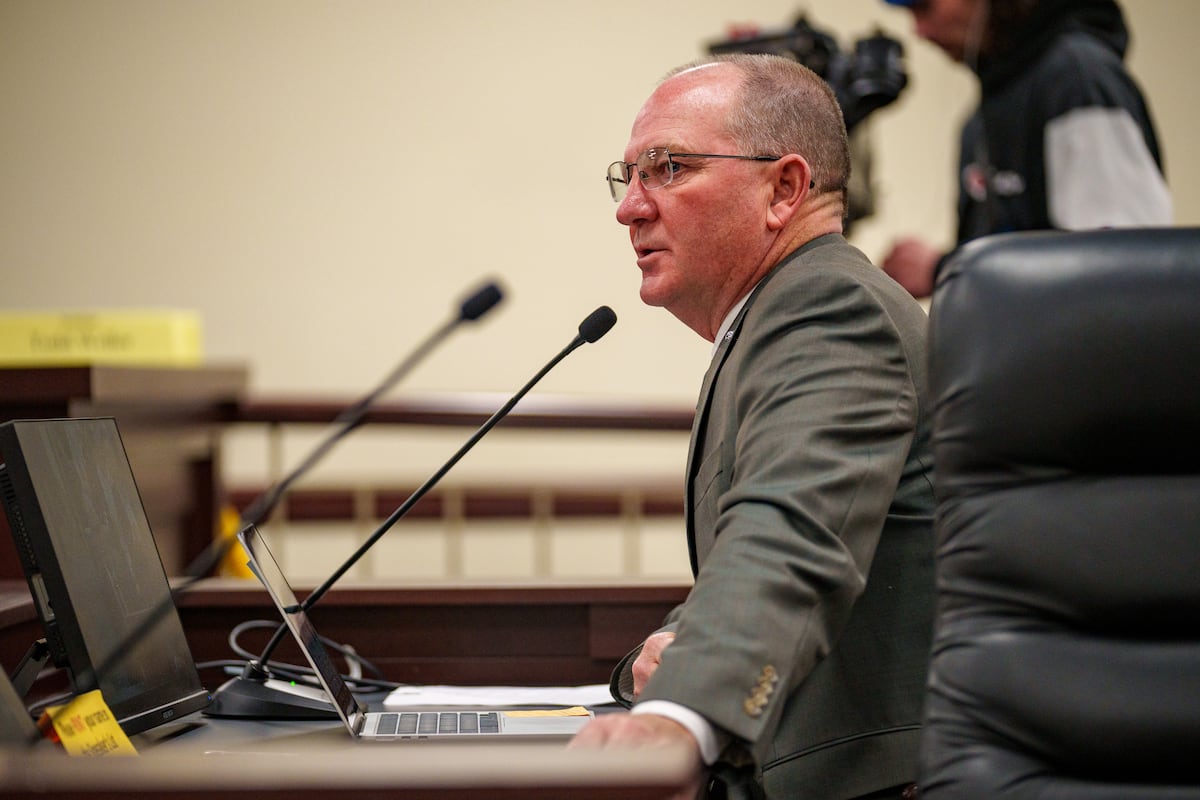Who Will Redraw the Congressional Maps? Meet the Ten Lawmakers Chosen!

Published: 2025-09-17 22:30:30 | Category: Trump GNEWS Search
The redrawing of congressional districts in Utah is under a strict deadline as legislative leaders appoint ten lawmakers to a committee tasked with creating a new map. This comes in the wake of a state judge's ruling that voided the previous maps, necessitating a fresh approach that complies with the reinstated Better Boundaries initiative.
Last updated: 25 September 2023 (BST)
The Context of Utah's Redistricting Challenge
The process of redistricting, which occurs every ten years following the census, has become a contentious issue in many states, including Utah. The recent developments arise from a ruling by Judge Dianna Gibson, who determined that the existing congressional maps do not conform to the standards set by Proposition 4, a voter-approved initiative aimed at ensuring fair districting.
Key Takeaways
- Utah's legislative leaders have appointed a ten-member committee to redraw congressional district boundaries.
- The new maps must comply with Proposition 4, reinstated by a Utah Supreme Court ruling.
- The committee has until 25 September to draft the new plan, with a public comment period following.
- Failure to comply with the standards may result in the court choosing an alternative map from plaintiffs.
- The final maps must be submitted by 10 November for the 2026 midterm elections.
The Legislative Committee's Composition
The committee's leadership is composed of key figures from the Utah legislature, including:
- Candice Pierucci, R-Riverton - House leader.
- Scott Sandall, R-Tremonton - Senate leader and co-chair of the previous committee.
Alongside them, other members include:
- Republican Senators: Lincoln Fillmore, Don Ipson, Mike McKell.
- Democratic Senator: Luz Escamilla.
- Republican House Representatives: Walt Brooks, Stephanie Gricius, Calvin Roberts.
- Democratic Representative: Doug Owens.
The Implications of the Court's Ruling
The Utah Supreme Court's ruling reinstated Proposition 4, which mandates that new congressional maps must adhere to specific criteria. These include ensuring compactness, contiguity, and minimal division of cities and counties. Moreover, the committee is prohibited from factoring in partisan voting data when devising the new map.
What Happens Next?
The timeline for redistricting is tight. The committee must draft a new congressional map by 25 September 2023. Following this, the public will have a 10-day window for feedback before the proposed map is voted on during a special legislative session.
If the lawmakers' map manages to fulfil the requirements of Proposition 4, it will be submitted for judicial approval. However, if it falls short, Judge Gibson might choose an alternative map presented by the plaintiffs of the original lawsuit.
The Role of Public Engagement
As part of the redistricting process, public engagement is crucial. The legislative website dedicated to the redistricting effort will be a hub for materials and updates. However, as of now, no public meetings have been scheduled, raising concerns about transparency and community involvement in the map-drawing process.
Looking Ahead to 2026 Elections
The urgency of the situation is underscored by the approaching 2026 midterm elections. Finalised maps must be ready by 10 November 2023, giving county clerks sufficient time to prepare for the elections. The implications of these maps will affect representation and political power across Utah for the coming decade.
What Are the Possible Outcomes?
As the committee embarks on this redistricting journey, several outcomes are possible:
- The new map could be approved by the court, leading to a new framework for the 2026 elections.
- The court may reject the committee's map, prompting the adoption of an alternative plan.
- Legal battles may continue if the Legislature opts to appeal Gibson's ruling, prolonging the process.
Conclusion
Utah's redistricting process is at a pivotal moment, and the decisions made by the committee will have lasting impacts on the state's political landscape. As legislators work under a tight deadline, the focus will be on creating a fair and equitable map that adheres to the standards set by Proposition 4. The need for public engagement is clear, and how well the committee responds to this need may shape the perception of this redistricting effort.
What will be the impact of the newly drawn congressional maps on Utah's political dynamics? Only time will tell. #UtahRedistricting #Proposition4 #Election2026
FAQs
What is Proposition 4?
Proposition 4 is a voter-approved initiative in Utah designed to ensure fair and transparent redistricting by setting specific standards for congressional maps, including compactness and contiguity.
When must the new congressional maps be submitted?
The new congressional maps need to be submitted by 10 November 2023 to allow for adequate preparation for the 2026 midterm elections.
What happens if the committee's map is rejected by the court?
If the committee's map does not meet the required standards, Judge Gibson may choose an alternative map submitted by the plaintiffs of the original lawsuit.
How is public input incorporated into the redistricting process?
The public will have a 10-day period to comment on the proposed congressional map following its draft release. However, no public meetings have been scheduled at this time.
Can the Legislature appeal the court's ruling on the redistricting timeline?
Yes, the Legislature has indicated that it may appeal Judge Gibson’s ruling, although the Utah Supreme Court has already rejected an appeal regarding the timeline for redrawing the boundaries.



